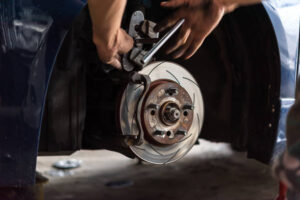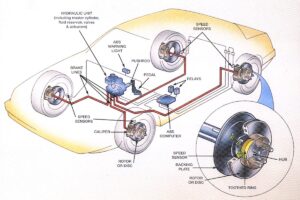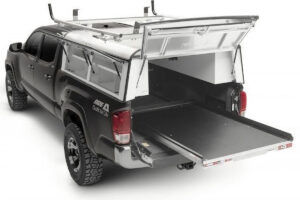
Ensuring Safe Braking: A Guide to Brake Preventive Maintenance
A Guide to Brake
Home » A Disc Brake Inspection Guide
If you have oversized tires, you will wear out your brakes more quickly than a truck with stock tires would. That’s why trucks with larger tires should have the brakes inspected more often.
To thoroughly maintain your disc brakes, you’ll need to inspect three different components on a regular basis and then replace the parts if needed:
If you have a set of basic tools and good eyes, you can inspect your disc brakes at home. This guide will show you how to inspect each part.
Your brake pads will wear out over time. When your brake pads go bad, your truck’s stopping power is drastically reduced. Worn out brake pads can also damage the rotor beyond repair. The best way to determine if your brake pads still have any life left in them is to physically inspect them.
You want to measure the brake pad lining. If the thickness is 3mm or less, then the pads need to be replaced. If it’s between 4mm and 7mm, then they need to be replaced soon. If it’s 8mm or over, then the pads are still good. Also, check for uneven wear. This guide outlines the inspection process in more detail.
Brake rotors last longer than brake pads do, but they still need to be replaced eventually. Sometimes they’ll go bad early on. When you have the wheel off, it’s worth taking a few minutes to check out your brake rotors to see if they’re still in good shape. You want to look for:
Here’s a good set of instructions on thoroughly inspecting the brake rotors on your truck.
If you’ve been putting your brake calipers to good use for over 100K miles, then they’re probably either bad or about to go bad. It’s always a good idea to take a look at your calipers when you inspect your brake pads and/or rotors. When you inspect your calipers, you’re looking at six different components:
For a thorough set of instructions on checking each component, check out this guide.
If you have any questions about inspecting your disc braking system, you can contact us. We’re happy to answer any brake system questions you may have!


